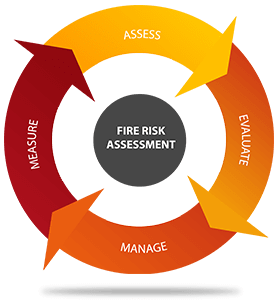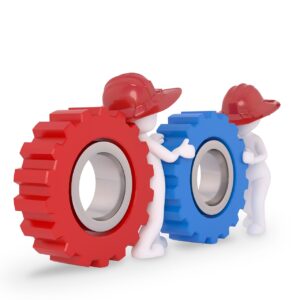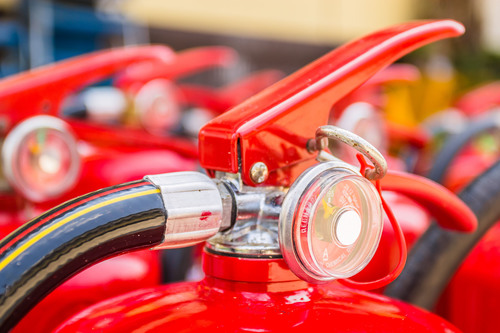Fire extinguisher Maintenance Services

"KABSON" FIRE FIGHTER IS REOWNED FOR ITS WORLD CLASS FIRE EXTINGUISHER MAINTENANCE SERVICES IN PAN INDIA.
We call it "Zero time wastage" as we understand that this is a life saving device
Why is Fire Training Drill & Safety Important?
“KABSON” fire fighter plays a important part in Fire Training Drill & safety because this is a major component in fire extinguisher maintenance services for “KABSON” fire fighter.
As we all know, Fires damage buildings, kill individuals, and claim lives. A workplace fire will also result in job destruction. Fire prevention preparation is an essential strategy for ensuring a healthy environment and avoiding fires. Jobs who have had adequate training will remove fire risks and act effectively and safely if a fire breaks out. Without proper preparation, a minor incident will easily develop into a major incident with disastrous consequences.
If there is a fire, everybody is at risk. Any workers, however, may be at higher risk because of where or where they work, or because they are unfamiliar with the premises or the machinery on the job site.
Workers will be taught how to identify fire risks, perform a fire safety risk assessment, avoid a workplace fire, and respond if one happens during fire safety training

Recognizing Fire Hazards in fire extinguisher maintenance services
Fire prevention preparation starts with an understanding of the fundamental properties of fire. All fires begin when heat (a source of ignition) collides with fuel (anything that burns) and oxygen is present. The aim of fire protection is to keep sources of ignition and fuel apart
5 Reasons Fire Training Drills are Essential for Every Fire Extinguisher Maintenance Services
The fire alarm is an inevitable experience that elicits a wide variety of feelings – there’s the summertime fire drill, where everybody is all too eager to lay down their tools and spend five minutes chatting in the sunlight.
Then there’s the rainy day fire drill, which always forces you to trudge outside in the cold and damp – without pausing to gather possessions or, most importantly, jackets!
Regardless of the mixed responses or the time of year, fire drills are an utterly important occurrence on any work schedule…
The first and most important justification for performing a fire drill is to obtain experience. Everyone in the building must be aware of and understand the evacuation protocol so that, in the event of a true emergency, they know which staircase to take, where the fire escapes are, where the assembly point is, and, most importantly, that there is no reason to worry.
No matter how meticulously you plan your escape from a burning house, nothing ever goes as expected. There could be a hallway blocked by a stationary delivery that hasn’t been emptied yet, or a door that has been unintentionally closed for protection that you didn’t realise was a fire hazard until it’s impeding your escape path.
While it is a legal necessity to monitor the alarms on a weekly basis to ensure they never malfunction in an emergency, it is all too tempting to miss testing a sounder in the ladies bathroom or the visual warning systems on the first floor.
Of necessity, one of the most crucial reasons for conducting routine fire drills is to ensure that we are in compliance with the law. According to the law, you must instal an adequate fire alarm system and use it to conduct at least one fire drill every year during working hours, involving all employees. When you recruit new employees, you can remind them of the fire drill protocol to make sure they understand all risks and the structured evacuation strategy.
Your work atmosphere may have changed after the last fire drill; you may have recruited additional workers, including those with accessibility issues, or you may have changed the configuration of your premises. While any improvements in the climate could result in a new risk assessment and a revised strategy, checking the new plan with a fire drill is the best way to ensure you get everything correct.
Conducting a Risk Assessment for Fire Protection for fire extinguisher maintenance services
The fire safety risk evaluation aids in deciding what a workplace could do to avoid a fire and keep workers safe. The evaluation considers:
- Routes and exits for emergencies
- Systems for fire detection and warning
- Firefighting tools
- Hazardous chemicals must be removed or safely stored.
- The fire rescue procedure in case of an emergency
- Vulnerable persons' needs
- Interaction with staff and those on the property
- Fire awareness training for employees
The first move in determining fire risks is to perform a fire safety risk assessment. It further describes the individuals who are at risk, the state of emergency preparedness, and the effectiveness of occupational controls. Employers should strengthen their fire safety policies and remove or minimise risks using the knowledge from the risk appraisal.Employers should also ensure that employees receive proper training.

Preventing Fires in the Workspace
- Maintain a safe workspace. Litter and building waste serve as fuel for fires. Clutter can obstruct exits and emergency supplies.
- Label possible fire threats with transparent, conspicuous signage. In all work places, post emergency phone numbers and the business address near the phone.
- Put oily rags in a metal jar with a lid. This waste must be disposed of properly on a daily basis.
- Electrical cords and wires should not be run under rugs or carpets or by a heat source; they should also be kept out of doorways where they can get worn.
- Use and store chemicals in a controlled manner. To think about flammability and other fire risks, read the labels and Material Safety Data Sheets (MSDS). When using and handling these substances, make sure you have enough airflow.
- Sprinklers, firefighting vehicles, and emergency doors can never be blocked. When stacking components, keep clearances in mind.
- Smoke only in designated areas and properly dispose of smoking products. Never, ever smoke in a storeroom or in a chemical storage area.
- To avoid overheating and friction fires, keep machines clean and well lubricated.
- Fix defective wires and malfunctioning electrical appliances as quickly as possible. You can never try electrical fixes until you are eligible and approved to do so.
- Keep all electrical control panels available. In an emergency, material or machinery stored in front of the panels may cause power outages.
- When operating in highly volatile environments, such as those containing flammable liquid vapours or fine particles, be mindful of potential ignition sources (e.g. vehicle paint spraying or grain flour). Use non-sparking tools to keep static electricity under control as required.
- Learn how to use a fire extinguisher correctly. Know where the fire extinguishers are and which extinguishers to use on which kind of fire.
What to Do If a Fire Starts?
It is important that everybody in the workplace is prepared in the case of a burn. Staff must consider what to do in the event of a fire and how to work together to successfully avoid the spread of a fire.
Staff master the following during fire safety training:
- The company's emergency preparedness programmes
- The role of the worker in the emergency plan
- How to sound the fire alarm so that the building's inhabitants will evacuate
- to exit the place as soon as possible, shutting all doors behind them
- Where there are designated mustering areas outside the building
- What do they do if they experience heat or smoke upon leaving the building?
- How to Use a Handheld Extinguisher to Combat a Small Fire
Workers and supervisors alike must take fire drills seriously and learn from them in order to increase response times. Flaws in the evacuation plan can be discovered by practicing what to do in a storm, and those flaws can then be corrected. Practice also boosts morale and makes people stay calm in the event of a real burn..
Extinguishers are used to put out fires
The bulk of offices have handheld fire extinguishers. Fire extinguishers will only extinguish thin, contained flames, such as a wastebasket fire. Different office extinguishers may or may not be appropriate for dealing with grease or electrical fires.
Workers who have not been trained to use portable extinguishers should not try to battle a fire.
Staff learn never to fight a fire by training:
- if the fire is massive and quickly spreading
- if the spread of fire threatens to hinder their escape route
- if they have not been taught to use the extinguisher correctly or are unaware of the type of fire
If firefighters are called in to combat a fire, they should:
- initial dial 1-0-1
- Be certain that everyone has evacuated or is leaving the area or house.
"KABSON" Fire Engineering - Fire fighter company in Odisha
Fire engineering is an integral aspect of the construction of all modern buildings. Fire engineering is something more than a series of guidelines. This style of engineering preserves a structure, its inhabitants, and the local environment.
In an increasingly dynamic environment, we use our knowledge and skills to include fire protection advice and resources to address fire safety challenges and problems.
In the early stages of growth, we should schedule a fire strategy analysis to detect any risks that could be identified during the pre-planning process. Our specialist fire engineers have decades of collective experience planning complex systems, and they are well-known around the UK for their abilities to navigate around safety and construction problems.
"KABSON" Fire Engineering Fire Fighter company in Odisha
Our team of experts is committed to collaborating with and assisting our clients from the initial stages of evaluation, during the early design concept process, and to providing a complete and thorough recorded fire plan. We would apply our knowledge gained by working on projects of all sizes and in a variety of industries.
If our traditional fire engineering plans do not have the right design for a client’s structure, we will design a bespoke approach to suit their fire engineering specifications. In addition, we provide fire risk analysis and fire safety control systems for completed buildings, ensuring security and compliance for the life of the house.

Annual Maintenance Contracts (AMC)
Fire extinguisher maintenance services

Even the best firefighting equipment may fail to operate properly if it is not serviced and maintained on a regular basis. A operation and maintenance plan provides you with the following benefits:
- Reduced chances of equipment failure as needed, protecting your finances and your company.
- Your fire protection hardware's life will be extended.
- Formance with the provisions of the municipal fire department and the insurance provider.
- Saves capital that would otherwise be wasted on coping with unforeseen breakdowns.
Since fire fighting systems are seldom used, it is much more important to ensure that they are still in full working order. Heavy investments are made in the construction of Fire Safety Hardware – the whole investment is lost if the fire systems struggle to function on the occasional occasions that they are expected to function and save life, companies, and investments.
“KABSON” Fire Fighter delivers Detailed and NON-COMPLETE AMC’s for mounted Fire Protection appliances. Our plans are often tailored to the specific budget and programme needs. In reality, we are currently offering FREE MAINTENANCE on fire extinguishers and other fire protection devices.
We have a single maintenance contract for all fire safety equipment/systems mounted in your facilities, including portable fire extinguishers, automated fire warning systems, water-based fire fighting systems, CCTV, biometric access control, gas-based automatic flooding systems, emergency lighting, and emergency evacuation signage.
There are obvious benefits of using a single contract. The most valuable benefit is the peace of mind that comes with knowing that there will be no holes or overlaps in your fire safety as a result of different departments sharing different roles.
Refilling of fire extinguisher
"KABSON" Fire Fighter is one of India's leading producers of fire protection equipment & fire extinguisher maintenance services. Our business deals with a wide range of fire extinguishers and fire safety devices such as Fire Suppression System, Water Mist & Specialised Products, and we are also planning to expand into Fire Extinguisher Refilling Services.
WHY REFILLING OF FIRE EXTINGUISHERS?
Refilling fire extinguishers ensures that the extinguishers are ready to tackle a fire emergency at any moment. If you do not arrange routine checks to refuel your extinguishers, you increase the likelihood of equipment failure, and Kanex needs to pay special attention to this.

WHEN SHOULD FIRE EXTINGUISHERS BE REFILLED?
If the extinguishing agent inside was not properly discharged, the extinguisher must also be serviced until it can be used again.
The country’s regulatory system requires you to refill your fire extinguisher.
"KABSON" Fire fighter Refilling Process
The fire extinguishers are discharged to clear the contents, and the output of the extinguishers is also verified.
The extinguisher is then entirely dismantled / disassembled, and the container is cleaned for any residue of material inside the cylinder.
The cylinder is then subjected to a 2.5-minute Hydro Static Pressure Test at 35 bar to check for leakage and the reliability of the welding efficiency.
The cylinder was subjected to a semi-automatic powder coating process before being baked in an oven at 200 degrees Fahrenheit for 10 minutes. This results in a new appearance, super high consistency, and long-lasting paint surface on the cylinder.
Fresh extinguishing medium, such as dry chemical powders, steam, water, or different types of foams, is filled into the cylinder using a vacuum-based procedure, which fills the cylinder with an accurate volume of extinguishing agent.
The extinguishers are then assembled with the discharge valve using a torque wrench to ensure fitment precision, and all O’ Rings are replaced with new ones.
The fire extinguisher is filled / pressurised with 99.99 percent pure nitrogen combined with helium of UHP grade.
The fire extinguishers are then put into a dual leak test procedure, which includes an inverted glass jar leakage test in water and a Mass Spectro Meter Helium Leak Detection Test.
